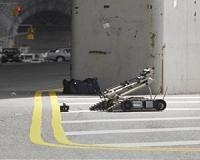 |
Tokyo (AFP) April 19, 2011 The Japanese government on Tuesday urged "heartless" people, local authorities and businesses not to discriminate against evacuees from the area around the crippled Fukushima nuclear plant. The call came after some evacuation centres demanded radiation-free certificates from people who lived near the plant, and following reports that hotels have turned them away and their children have been bullied. "I cannot stress enough how regrettable it is that some heartless people have acted like that," said Koichiro Genba, a state minister for national policy. "I want industries and central offices and agencies to give instructions to prevent such incidents from occurring." The top government spokesman Yukio Edano said: "As an objective fact, radioactivity is not anything contagious like infectious diseases." Such discriminatory acts "are obviously overreactions," said Edano, the chief cabinet secretary. Since the March 11 earthquake and tsunami triggered the world's worst nuclear crisis since Chernobyl, nearly 86,000 people have had to evacuate, with about 30,000 of them relocated outside Fukushima prefecture. They include residents from inside a 20 kilometre (12 mile) radius around the Fukushima plant. More than five weeks since the accident, several cases have emerged in which people from Fukushima have faced discrimination. In one case that surfaced Tuesday, the city of Tsukuba, Ibaraki prefecture, has required anyone from Fukushima prefecture to go through radiation checks and submit medical papers before being accepted into shelters. Tsukuba's mayor Kenichi Ichihara later apologised, telling reporters he was sorry "that inadequate measures taken by Tsukuba city have caused problems and misunderstandings for people who have been evacuated."
earlier related report Japan has been working feverishly to bring the Fukushima Daiichi nuclear power plant, 250 kilometres (155 miles) northeast of Tokyo, into safe shutdown since it was hit by a 14-metre (46-foot) tsunami on March 11, triggering the world's worst nuclear accident since Chernobyl. The plant's operator, Tokyo Electric Power Company (TEPCO), said on Sunday it aims to reduce radiation leaks within three months and to achieve a so-called "cold shutdown" within six to nine months. So far, the overall radioactivity release has been around 10 percent of that seen at Chernobyl 25 years ago, the Japanese authorities have said. And the International Atomic Energy Agency's head of nuclear safety, Denis Flory, said the amount would not increase much further. "There has been high bursts of radioactivity from the beginning," Flory told a regular news briefing here. Currently, radioactivity was still leaking "at low level" but those leaks were decreasing. "So, taking into account all the measures that are foreseen, the new amount of release will be decreasing and decreasing, and the total amount would not be much different from what it is today," the expert said. According to Japanese estimates, the total radiation release at Fukushima so far has been 370,000 terrabecquerels, compared with 5.2 million terrabecquerels at Chernobyl. Asked whether TEPCO's six-to-nine-month timeframe for achieving a cold shutdown was realistic, Flory replied: "Whether they will be able to keep (to) this ... will be shown by the facts." Nevertheless, it was "very positive" that such a timetable had been set out at all, the expert added. The IAEA's role over the next six to nine months would remain what it has been so far, that is to "share information," Flory continued. The watchdog would, however, send a team of international experts on a first fact-finding mission to Fukushima before June, he said. And further follow-up missions would follow, Flory added. The IAEA is to host a ministerial-level summit from June 20-24 to try to examine the lessons learned from the Fukushima crisis.
Share This Article With Planet Earth
Related Links Space Technology News - Applications and Research
 Robot readings in Japan nuke plant 'harsh'
Robot readings in Japan nuke plant 'harsh'Tokyo (UPI) Apr 18, 2011 Remote-control robots at the quake-damaged Fukushima nuclear plant in Japan have measured a "harsh environment" for humans to work in, officials said. The measurements, which will complicate efforts to stabilize the damaged reactors, came a day after the company operating the Fukushima Daiichi plant said it would take until the end of the year to bring the crisis under control, the BBC ... read more |
|
| The content herein, unless otherwise known to be public domain, are Copyright 1995-2010 - SpaceDaily. AFP and UPI Wire Stories are copyright Agence France-Presse and United Press International. ESA Portal Reports are copyright European Space Agency. All NASA sourced material is public domain. Additional copyrights may apply in whole or part to other bona fide parties. Advertising does not imply endorsement,agreement or approval of any opinions, statements or information provided by SpaceDaily on any Web page published or hosted by SpaceDaily. Privacy Statement |